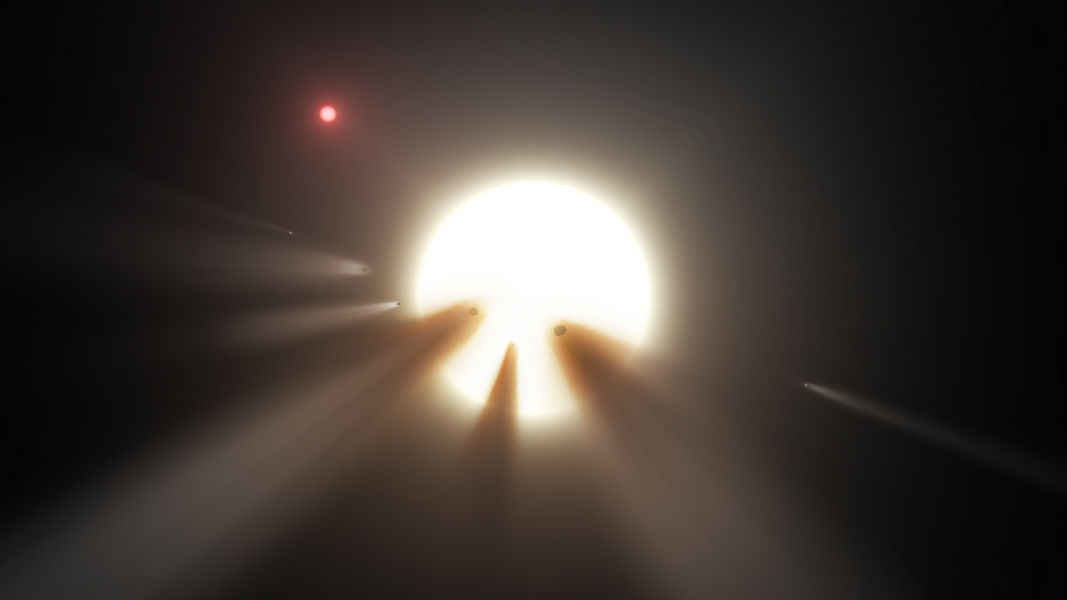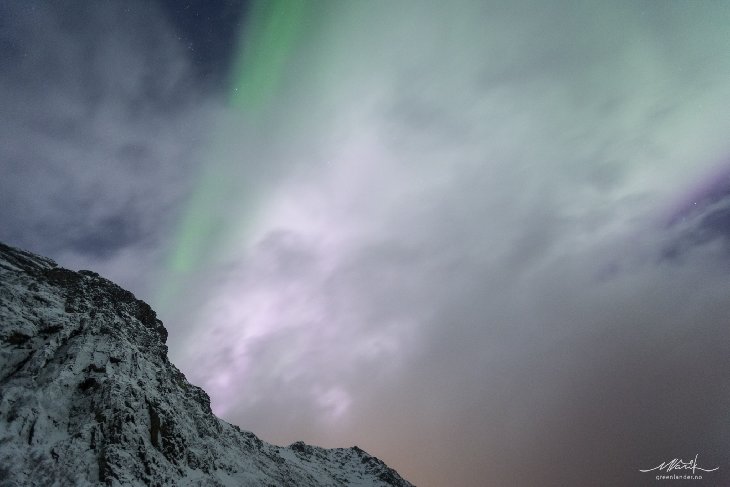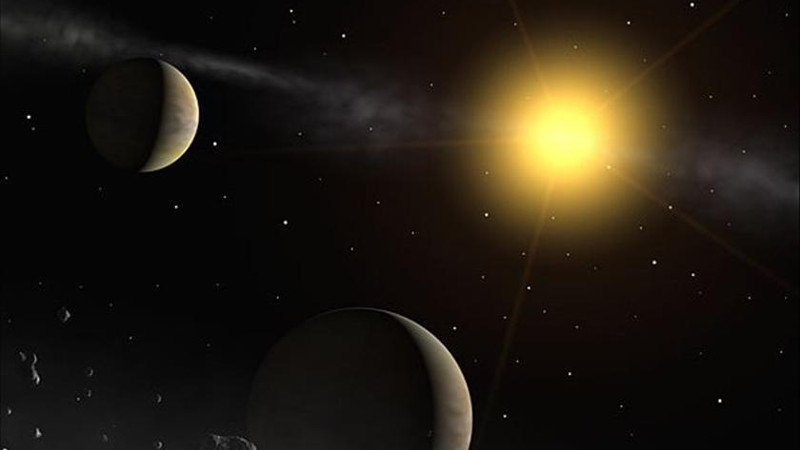
© NASA/JPL-CaltechThis artist's illustration shows comet fragments crossing the face of a star, one possible explanation for the strange dimming exhibited by "Boyajian's star."
San Francisco — Astronomers may have to think a little harder to solve the mystery of Boyajian's star.
In September 2015, Yale University's Tabetha Boyajian and her colleagues reported that
the star KIC 8462852 has dimmed dramatically multiple times over the past seven years, once by an astounding 22 percent.NASA's planet-hunting Kepler space telescope spotted these dimming events. But the brightness dips of "Boyajian's star," as it has come to be known, were far too significant to be caused by an orbiting planet, so astronomers began thinking of alternative explanations.
Researchers have come up with
many possible causes for the dimming, including a swarm of broken-apart comet fragments, variability in the activity of the star itself, a cloud of some sort in the interstellar medium between Kepler and Boyajian's star, and, most famously, an orbiting "megastructure" built by an alien civilization to collect stellar energy.
Researchers are testing these hypotheses to the extent possible. For example, the $100 million Breakthrough Listen initiative is using the Green Bank Telescope in West Virginia to
hunt for signals coming from Boyajian's star, which lies about 1,500 light-years from Earth.



Comment: See also: Veteran northern lights guide surprised to see rare pink and white auroras